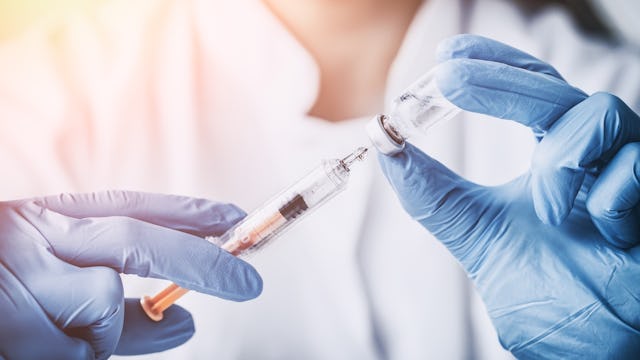Percentage Of Kids Under 2 Who Aren't Vaccinated Has Quadrupled Since 2001

The number of unvaccinated kids has steadily increased every year since 2001
Recently released federal health data paints an incredibly disturbing (and frustrating) picture when it comes to kids and vaccines. Since 2001, the percentage of kids under age two who haven’t received any vaccinations has quadrupled. You don’t need to be a scientist or medical professional to know that’s not good.
First, the good news — according to a pair of recent CDC studies about immunization rates among preschoolers and kindergartners, the majority of American parents are vaccinating their kids, totally on schedule. But the recent “trendiness” of eschewing vaccines in favor of — oh, I don’t know, essential oils and positive thinking?– has gone up significantly in the last 17 years. Nationally, vaccine rates remain relatively stable, but there are pockets around the country where percentages of unvaccinated kids are higher — and increasing every year.
So how many are we talking, here? The nitty gritty numbers make it sound kind of harmless — in 2001, 0.3 percent of 19- to 35-month-olds hadn’t received any vaccines. In 2011, the rate was 0.9 percent. By 2015, it crept to 1.3 percent. Assuming the same proportion of kids born in 2016 didn’t get immunized, that means there are around 100,000 totally unvaccinated kids under age two in America right now.
The figure is small when you consider there are over 8 million children under age two who are getting their needed vaccines, but Amanda Cohn, a pediatrician and the CDC’s senior adviser for vaccines, still sees reason to worry. “This is something we’re definitely concerned about. We know there are parents who choose not to vaccinate their kids . . . there may be parents who want to and aren’t able to [get their kids vaccinated],” she says.
Because there is real-world proof in some parts of the country that declining vaccine rates are contributing to outbreaks of previously eradicated diseases. Last year, Minnesota saw their worst measles outbreak in decades, largely due to anti-vaccine activists targeting immigrant populations and spreading misinformation about immunizations. According to The Washington Post, most of the 75 confirmed cases were unvaccinated Somali American children.
The vaccine rates are worse in rural communities with two percent of kids under two not receiving any vaccinations. That’s double the rate of urban children. Unvaccinated kids are also far more likely to be uninsured at a rate of seven percent as compared to 0.8 percent of kids who are covered by private insurance and one percent of kids who are covered by Medicaid.
However, Cohn points out that kids who are uninsured and kids on Medicaid are able to get free vaccines through a federally funded program. “Parents may not be aware of this, so this may be an education issue,” she explains.
And of course, there are the families who “opt out” of vaccines, a thing you’re allowed to do in all but a handful of states. 2.2 percent of kids have a vaccine exemption, which doesn’t sound like much, but the CDC says that percentage has increased three school years in a row. Saad Omer, a professor of global health, epidemiology and pediatrics at Emory University, says “It seems that in recent years, exemptions are going up, and the trend is likely due to parents refusing to vaccinate.”
Researchers can’t say for sure the reason for the increase in unvaccinated kids, but they do acknowledge that the ease of obtaining exemptions could be a contributing factor, citing West Virginia as an example. The state doesn’t allow non-medical vaccine exemptions and boasts higher rates of kids getting vaccinated.
Bottom line, vaccinating is good. Vaccinating is necessary for those of us healthy enough to receive them — the immune-compromised and young infants are unable to receive some (or all) vaccines, and depend on the coverage herd immunity provides. More states need to disallow non-medical exemptions — or we can expect those already-concerning numbers to go up even more.